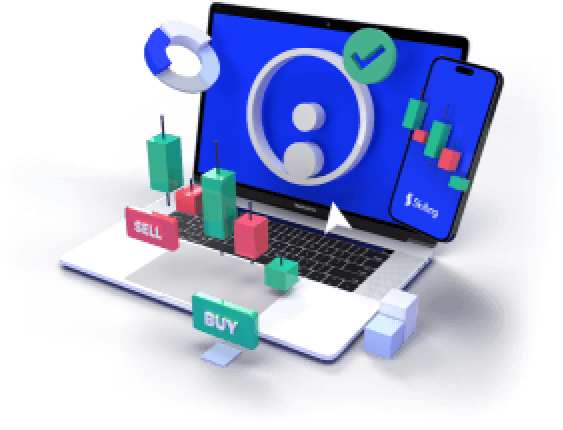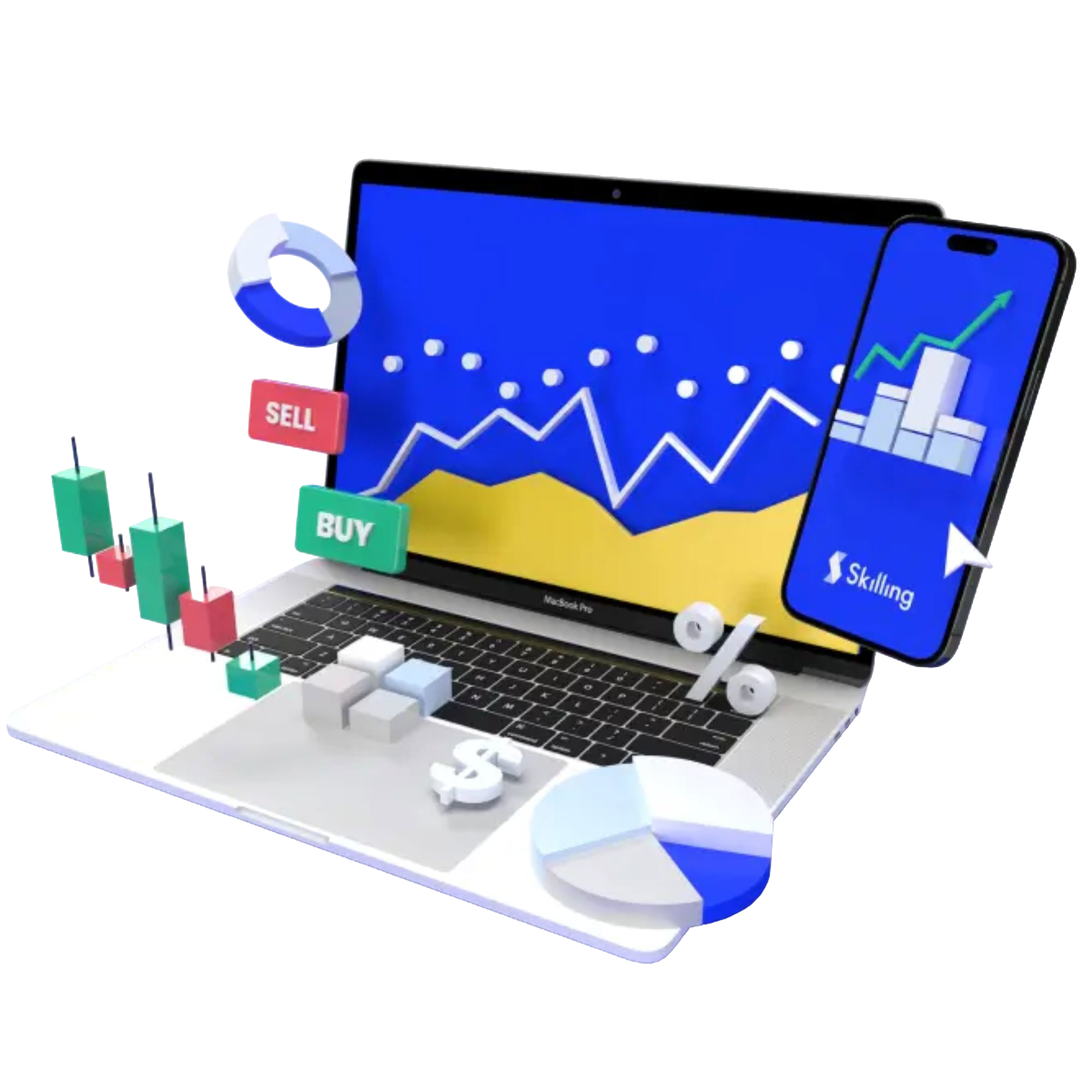Access 1,200+ global CFDs instruments.
Access a plethora of trading opportunities across the financial markets.

Access 1,200+ global CFDs instruments.
Access a plethora of trading opportunities across the financial markets.

What is core inflation and why is it important?
Many people don't understand what core inflation means or why it matters. Core inflation is a way to measure the change in the cost of goods and services, excluding food and energy prices, which can be very volatile. By focusing on the more stable prices, core inflation helps us see the underlying trend in price changes. For instance, just as fluctuations in the Bitcoin price today could create short-term volatility in the cryptocurrency market, core inflation offers a clearer view of economic trends by excluding volatile components.
Core inflation example
Imagine you are shopping for groceries and notice that the price of bread and milk has stayed the same, but the price of vegetables has gone up because of a bad harvest. At the same time, the price of gasoline has also increased due to international events. If we look at overall inflation, it might seem like prices are rising quickly.
However, core inflation focuses on more stable prices by excluding food and energy costs. In this case, even though vegetables and gasoline have become more expensive, core inflation would show that the prices of most other items, like bread and milk, are stable. This helps give a clearer picture of the true trend in price changes without being affected by temporary spikes in food and energy prices.
What is included in core inflation
Core inflation includes the prices of goods and services that people buy regularly, except for food and energy. This means it covers a wide range of items such as clothing, housing, medical care, education, and entertainment. For example, the cost of rent, doctor visits, movie tickets, and school supplies are all part of core inflation.
By excluding food and energy, which can have unpredictable price changes, core inflation gives a more stable and accurate picture of how much the overall cost of living is changing. This helps us understand the long-term trend in inflation and make better economic decisions.
Practice with a Demo Account
Try our demo account and experience real market conditions.

What is the difference between CPI and core inflation?
| CPI (Consumer Price Index) | Core inflation | |
|---|---|---|
| Definition | Measures the overall change in prices for all goods and services. | Measures price changes excluding food and energy. |
| Includes | Prices of all items, including food and energy. | Prices of items excluding food and energy. |
| Volatility | More volatile due to the inclusion of food and energy prices. | Less volatile, providing a more stable price trend. |
| Purpose | Reflects the total inflation experience of consumers. | Shows underlying inflation trends without short-term spikes. |
| Example items included | Groceries, gasoline, clothing, medical care, housing. | Clothing, medical care, housing, education, entertainment (excluding food and energy). |
| Use in policy | Used to understand the overall cost of living changes. | Used for making economic decisions and setting policies due to its stability. |
Experience Skilling's award-winning platform
Try out any of Skilling’s trading platforms on the device of your choice across web, android or iOS.

Summary
As you've seen, core inflation offers a clearer picture of long-term price trends by excluding the often volatile prices of food and energy. This measure helps economists and policymakers understand the true direction of inflation and make informed decisions.
However, understanding core inflation is not just for experts—it's useful for anyone looking to grasp economic conditions and plan their finances better.
FAQs
1. Why are food and energy excluded from core inflation?
Food and energy prices can fluctuate widely due to factors like weather conditions and geopolitical events. By excluding them, core inflation provides a more stable and accurate reflection of underlying inflation trends.
2. How is core inflation calculated?
Core inflation is usually calculated using the Consumer Price Index (CPI), but it excludes food and energy prices. It tracks the price changes of a broad basket of goods and services over time.
3. What items are included in core inflation?
Core inflation includes a wide range of goods and services such as clothing, housing, medical care, education, and entertainment, but excludes food and energy items.
4. How does core inflation differ from the overall CPI?
While the overall CPI includes all items, including food and energy, core inflation excludes these volatile items to provide a more stable measure of price changes.
5. Why is core inflation important?
Core inflation is important because it helps policymakers and economists understand the underlying inflation trend without being affected by short-term price spikes in food and energy. This information is crucial for making informed economic decisions.
6. How does core inflation affect interest rates?
Central banks, like the Federal Reserve, often use core inflation to guide their decisions on setting interest rates. Stable core inflation can indicate a healthy economy, leading to stable interest rates, while rising core inflation might prompt rate hikes to control inflation.
7. Can core inflation be used to predict future inflation trends?
Yes, core inflation is often used to predict future inflation trends because it provides a more stable and consistent measure of price changes, helping to identify long-term patterns.
8. How frequently is core inflation reported?
Core inflation is typically reported monthly as part of the Consumer Price Index (CPI) report released by government statistical agencies.
9. Does core inflation affect everyday consumers?
Yes, core inflation affects everyday consumers as it reflects the long-term trend in price changes for most goods and services they regularly purchase, excluding food and energy. Understanding core inflation helps consumers make informed financial decisions.
Source: investopedia.com











